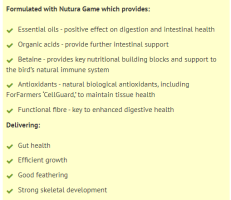Hi,
Why do people here keep saying that free roaming chickens or wild boar will have low pufa ? With no references. Studies online show the opposite.
If their diet is comparable to the wild pheasant in this study, this will certainly not be the case. Same thing for the pigs, the wild boar has a very high PUFA/SFA ratio. So wild game is not low(er) in PUFA.
The reality is that they have high pufa, and the ratios of PUFA/SFA are higher in wild game. This is one study that clearly demonstrates this: Healthy n-6/n-3 fatty acid composition from five European game meat species remains after cooking.
So why do people here say that free roaming non domesticated animals (whether fowl like chicken or boar, deer, ...) should be lower in PUFA ? It's simply not true.
"Meat PL from hare, red and roe deer contained more than 60% total PUFA (and >55% in the processed state), while samples from wild boar and pheasant showed somewhat lower PUFA content."
With that "lower" pufa content being 27% PUFA in total fat in wild boar and 37% PUFA in total fat in wild pheasant. You can check the table in the study.
Why do people here keep saying that free roaming chickens or wild boar will have low pufa ? With no references. Studies online show the opposite.
If their diet is comparable to the wild pheasant in this study, this will certainly not be the case. Same thing for the pigs, the wild boar has a very high PUFA/SFA ratio. So wild game is not low(er) in PUFA.
The reality is that they have high pufa, and the ratios of PUFA/SFA are higher in wild game. This is one study that clearly demonstrates this: Healthy n-6/n-3 fatty acid composition from five European game meat species remains after cooking.
So why do people here say that free roaming non domesticated animals (whether fowl like chicken or boar, deer, ...) should be lower in PUFA ? It's simply not true.
"Meat PL from hare, red and roe deer contained more than 60% total PUFA (and >55% in the processed state), while samples from wild boar and pheasant showed somewhat lower PUFA content."
With that "lower" pufa content being 27% PUFA in total fat in wild boar and 37% PUFA in total fat in wild pheasant. You can check the table in the study.

